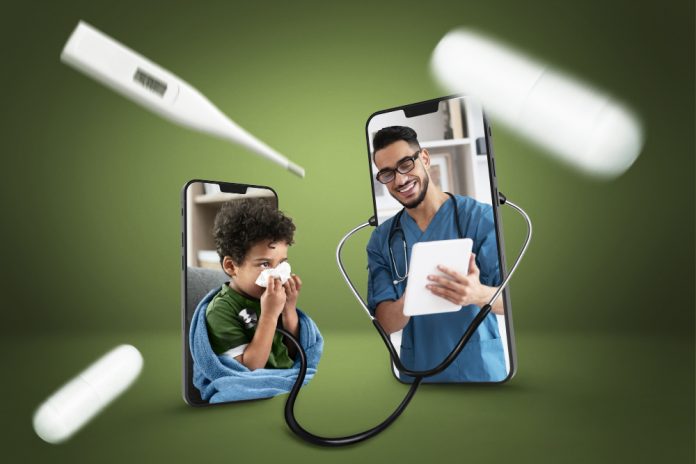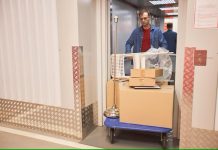There’s simply no denying the fact that the home healthcare sector has evolved tremendously, and it can be largely attributed to demographic aging, technological advancements, and worsening patient satisfaction with having care provided in hospitals. In an ever-evolving life setup, home care software has been mandated to develop that cater to the ever-changing and evolving nature of caregiving. People in the profession today have grown to have a specific type of need, which happens to be the flexibility of the occupation; their work becomes effective with the availability of suitable technology.
The Reality of Modern Home Healthcare Delivery
Active development and promotion of home care have raised optimism about future healthcare in terms of easy access, cost, and quality. As patients’ homes become the new epicenter for treatment, it is critical to understand novel challenges that care teams face in the dynamic, ever-evolving landscape of healthcare. Both concepts serve the end goal of enhancing the quality of a patient’s life, with remote care decreasing dependency on traditional brick-and-mortar care.
Healthcare software is required to be used in patients’ homes as well as coffee shops and hospitals. Services such as the ones mentioned above are seamlessly integrated while being used on a laptop, a smartphone, and a tablet. There are instances where all of these devices may not be readily available to the patient, and their information must be secure while being accessed on discrete devices and modules: cybersecurity strategies.
The complexity of home healthcare delivery extends beyond simple mobility requirements. Caregivers must manage multiple patient relationships simultaneously, each with unique care plans, medication schedules, and family dynamics. They coordinate with physicians, insurance providers, and family members while maintaining detailed records that satisfy regulatory requirements and support quality patient outcomes.
Essential Features for Mobile Healthcare Solutions
Effective mobile home health software must prioritize intuitive design that minimizes learning curves and maximizes productivity during patient interactions. Healthcare professionals often work under time constraints, making user-friendly interfaces essential for efficient operation. The software should streamline complex tasks like clinical documentation, medication management, and care plan updates into simple, logical workflows that feel natural to healthcare providers.
Cross-device compatibility represents another fundamental requirement for modern home healthcare technology. Caregivers frequently switch between devices throughout their workday, accessing patient information on smartphones while traveling, using tablets for patient assessments, and completing detailed documentation on larger screens when time permits. Cloud-based solutions ensure seamless synchronization across all devices, eliminating the frustration of data inconsistencies or access limitations.
Real-time communication capabilities enable healthcare teams to coordinate effectively despite being geographically dispersed. Secure messaging systems that comply with HIPAA regulations allow caregivers to consult with supervisors, coordinate with other team members, and communicate with family members without compromising patient privacy. These communication tools become particularly valuable during urgent situations that require immediate consultation or care plan modifications.
Streamlining Administrative Tasks for Better Patient Care
One of the most significant advantages of modern home health software lies in its ability to automate and streamline administrative tasks that traditionally consumed substantial portions of caregivers’ time. Electronic visit verification systems automatically track caregiver arrivals and departures, eliminating manual timekeeping while ensuring compliance with regulatory requirements. This automation reduces paperwork burden while providing agencies with accurate data for billing and quality assurance purposes.
Intelligent scheduling systems optimize caregiver routes and appointments, considering factors like patient locations, care requirements, and travel time. These systems can automatically adjust schedules in response to changes, cancellations, or urgent care needs, maximizing efficiency while minimizing stress for healthcare providers. Mobile access to scheduling information allows caregivers to view their daily appointments, receive notifications about changes, and navigate efficiently between patient locations.
Documentation efficiency receives significant enhancement through mobile-optimized forms and templates that guide caregivers through required assessments and observations. Voice-to-text capabilities enable hands-free documentation during patient visits, allowing caregivers to maintain eye contact and focus on patient interaction while capturing essential clinical information. Pre-populated forms based on patient history and care plans reduce repetitive data entry while ensuring comprehensive documentation.
Enhancing Patient Engagement Through Technology
Mobile home health software creates opportunities for enhanced patient and family engagement that extend beyond traditional caregiver visits. Patient portals accessible through mobile devices enable family members to stay informed about their loved one’s care progress, upcoming appointments, and medication schedules. This transparency builds trust while reducing the communication burden on caregivers who previously fielded numerous phone calls seeking updates.
Real-time access to patient information enables caregivers to provide more personalized, informed care during each visit. Complete medical histories, previous visit notes, and current care plans are immediately available, allowing caregivers to identify changes in patient condition and adjust care accordingly. This comprehensive view of patient status supports better clinical decision-making and more effective care coordination.
Emergency response capabilities built into mobile platforms provide critical safety nets for both patients and caregivers. GPS tracking enables agencies to locate caregivers quickly during emergencies, while panic button features allow immediate communication of urgent situations. These safety measures provide peace of mind for caregivers working in unfamiliar environments while ensuring rapid response to patient emergencies.
Integration and Interoperability Advantages
Modern healthcare delivery requires seamless integration between different systems and providers, making interoperability a crucial feature of effective home health software. Mobile solutions that connect with electronic health records, pharmacy systems, and physician practices create comprehensive care ecosystems that improve patient outcomes while reducing administrative burden. This integration eliminates duplicate data entry while ensuring that all healthcare providers have access to current, accurate patient information.
Billing and revenue cycle management integration streamlines the financial aspects of home healthcare delivery, automatically generating billing records based on documented care activities. This automation reduces billing errors while accelerating payment processing, improving cash flow for healthcare agencies. Mobile access to billing information allows supervisors to monitor productivity and ensure proper documentation for reimbursement purposes.
Conclusion
The evolution of home health care software as we migrate towards mobile design is more than just an advancement in the technology. In essence, it is a move from physician to patient-centered health care delivery, ensuring the need for services is met, and the correct service is rendered with the least effort. As more and more patients and care recipients continue to require home health services, the agencies that offer complete mobile practices will stand a better chance of getting sufficient quality of care providers while providing outstanding patient care.






